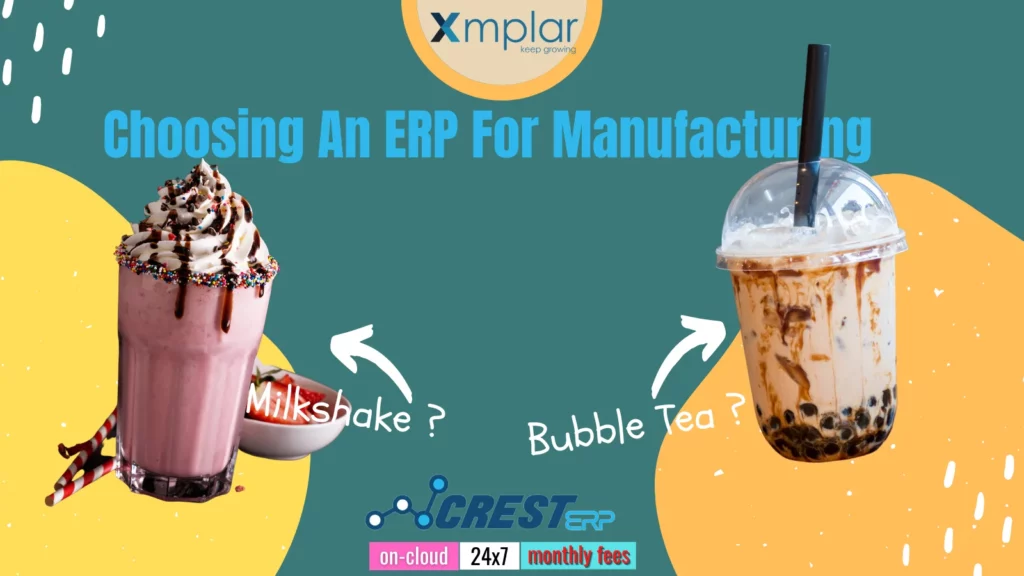
Do you own or manage a manufacturing business? If you do, we need not tell you about the unique challenges you face. However, for the benefit of everyone, let us look at them.
- 1. Constraint-based
- 2. Need for sound planning
- 3. Continuous monitoring
- 4. Cost-consciousness
- 5. Diverse models: MTO, MTS, mixed
Obviously, anyone from the manufacturing industry would turn to ERP and other software to tackle some or all these challenges. And so, the search begins…
There is enough and more software for the manufacturing industry. And every single one promises the moon and claims to be better than the rest. Picking the right one becomes difficult. How do you go?
It would be good to look at the overall design focus of every ERP. Some have origins in the non-manufacturing domain, with manufacturing modules getting added on later. Some are the other way around, with very good functionality for manufacturing. A few may offer a good balance of manufacturing and non-manufacturing features. You must assign a weightage to the features for manufacturing vs. the rest, to begin with. It would not be wise to dilute the importance of non-manufacturing though, since the extent of integration with the rest of the modules does matter.
An important point to note is the match between the complexity in your own business Vs. the software’s. If your operational model is rather simple and straightforward, complex software would trap you in unnecessary work. The number of unwanted features would make it hard to customize. Further, you will be paying for those unwanted features too! More than the price, it is the user frustration that sets in which will be difficult to manage. With too many processes to be hopped through and several workflows to be negotiated, small tasks will take a long time to be done. Even the shop-floor will start avoiding it, resisting it and over a period, application usage will fall. They will switch over to spreadsheets and other workarounds to get things done quickly.
Mid-market ERPs that cater to SME tend to strike a balance across modules. Since they understand the user environments, processes will be simpler and intuitive. There will be fewer intermediate steps and levels of review, which will speed up processing. Heavy features would be rare or missing. Some of them may not support mixed mode (MTO and MTS). It should offer excellent support for multi-level BoM.
The integration of the manufacturing module with Material Management and Logistics should be evaluated with all seriousness. In the case of Make-to-Order (MTO), for instance, planning should deal with order cancellations, with the entire BoM explosion being taken care of. Or, in the Make-to-Stock scenario, inventory visibility assumes prominence since production always goes on and long-term purchases orders may be placed. Errors in demand projection will lead to a glut of input stocks, dragging down working capital.
Workcenter Routing should be comprehensive, with the capability to acquire input costs and Workcenter costs correctly and assign those costs to a production order. A detailed cost sheet must be available for every production order, with the gross margin indication. This is where the business can try to optimize its procurement and production strategies.
All said, whichever product you choose, a well-managed pilot run will help you get an idea of the gaps and what they bode for the business.
Brough to you by Crest ERP
